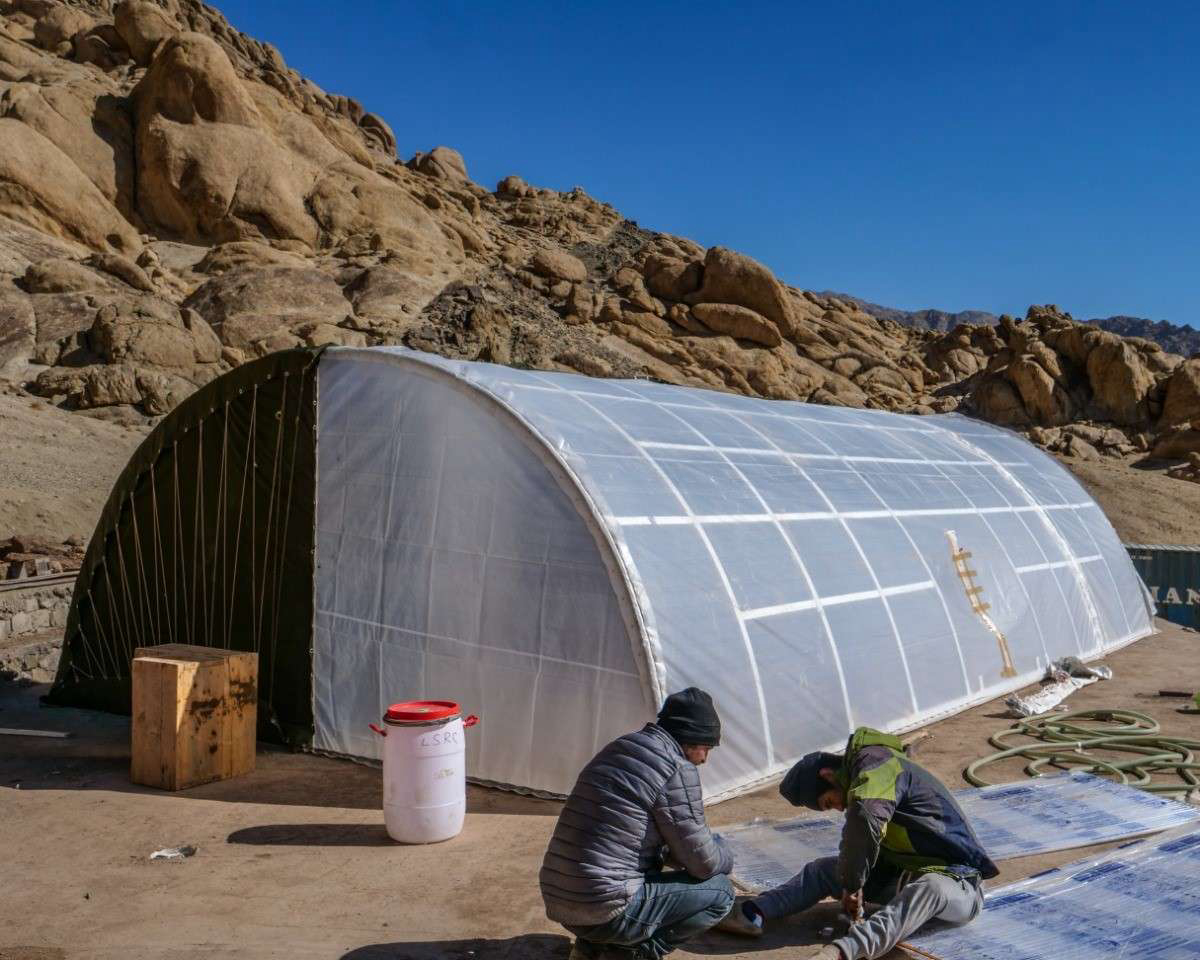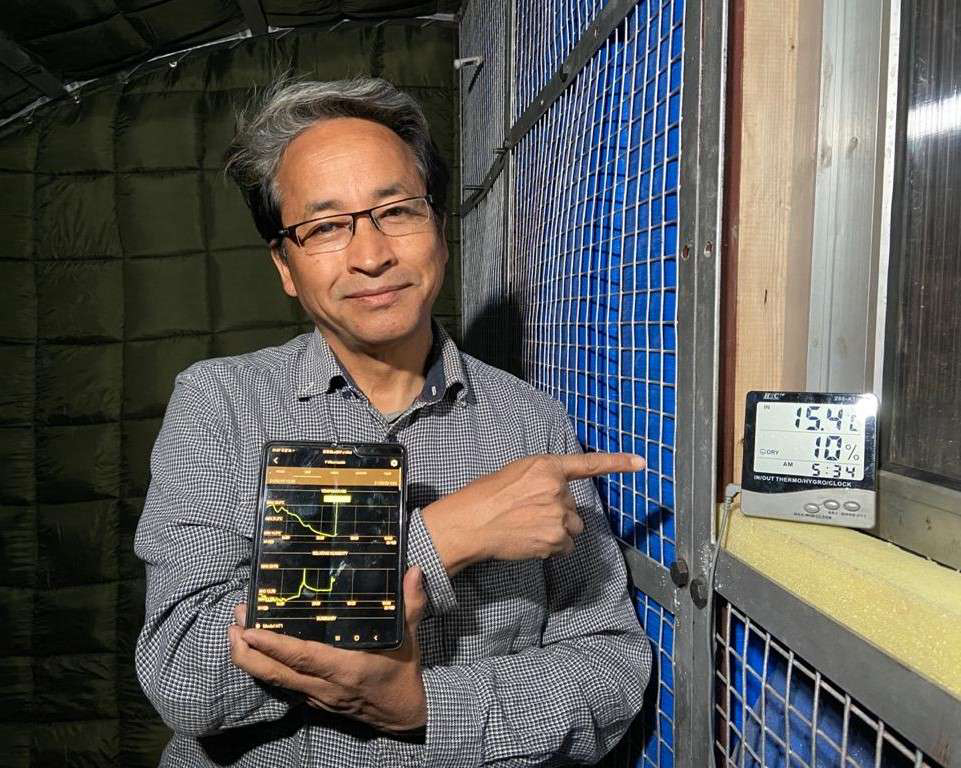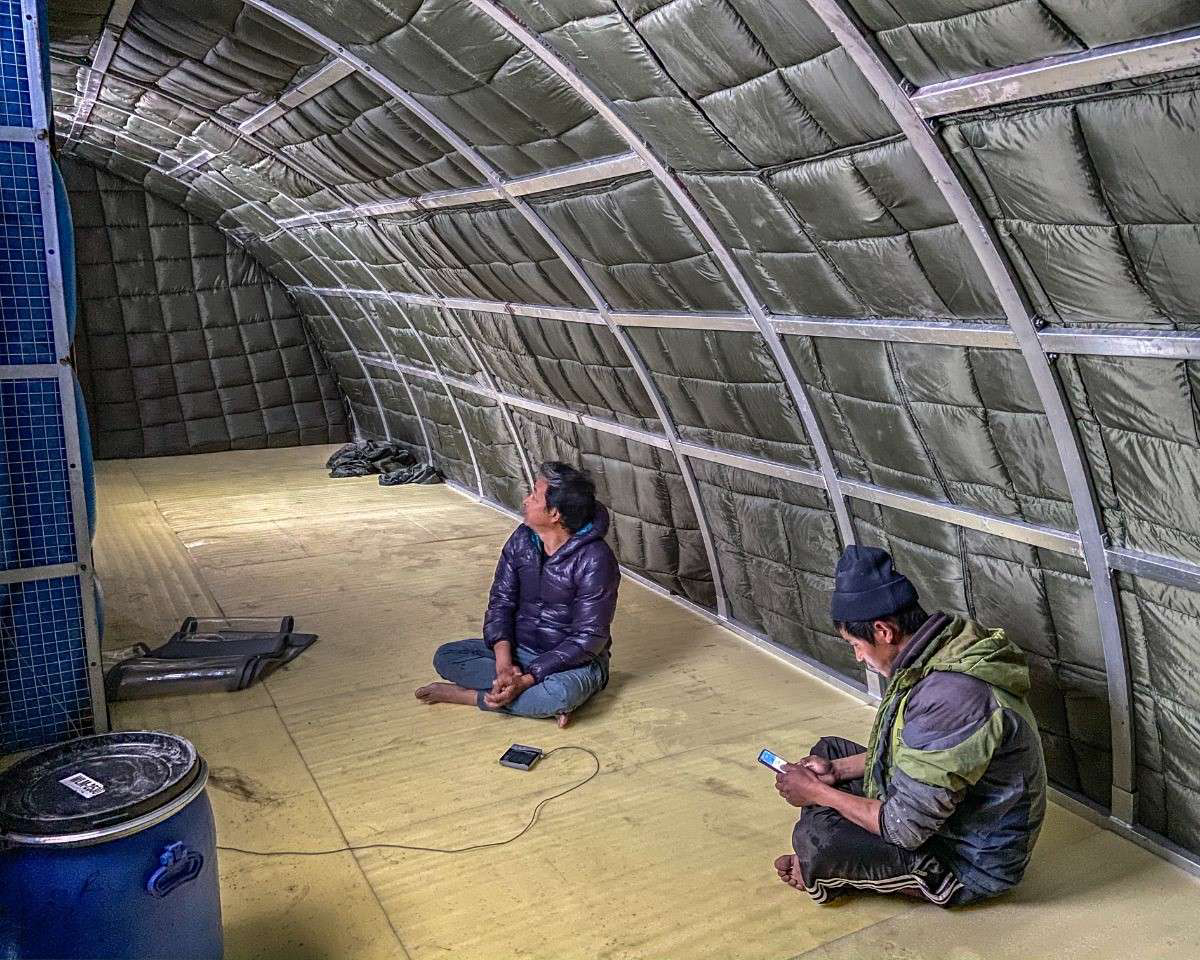
No one can forget the remarkable character of Phunsukh Wangdu from the movie 3 Idiots, which dazzled viewers with his unusual inventions even as he navigated college and adult life. But the real-life man who inspired this interesting character is an Indian engineer, innovator, and education reformist Sonam Wangchuk. He is the founding director of the Students’ Educational and Cultural Movement of Ladakh and also works for the welfare of Indian army soldiers. Recently, Sonam Wangchuk announced that he and his team at the Himalayan Institute of Alternatives (HIAL) have developed the prototype of a unique solar-heated tent for the soldiers of the Indian army stationed in the cold and high-altitude regions of Ladakh.
Sonam claims that the temperature inside this army tent stood at 15 Degrees Celsius at 10 pm on a day when the minimum temperature outside was 14 degrees Celsius, which showcases the insular properties of the tent. The tent also offers more space than the container cabins that the Indian Army utilizes for its soldiers, and moreover, this structure requires no kerosene for heating purposes and thus it’s no amount of pollution in the environment.

Last year, the Indian Army sent its soldiers to territories like Galwan Valley following the recent standoff with the People’s Liberation Army (PLA) of China along the Line of Actual Control (LAC). The army had to station a large number of soldiers in places where suitable accommodation was barely present through the winter, which meant they brought with them things unsuitable for the local environment. Indian soldiers brought quantities of Kerosene which they burnt to keep themselves warm in the harsh cold of the Ladakh. However, it created a drain on the beauty of the region and it was a massive onslaught against the local environment and similarly created serious discomfort to the Indian soldiers since the Kerosene-powered heating is prone to many fire accidents at times. And all these serious explanations made Sonam Wangchuk think about creating a tent that can be used by the military. This tent is portable, prefabricated, and can be assembled on the spot, with the well-connected solar structure, and now this unique type of tent is being patented. One can also dismantle the tent and set it up again anywhere else. Each of the pieces dismantled weighs under 30 kgs and can be carried by local porters and soldiers.
At the higher altitudes of Ladakh, the conditions are extremely difficult and the soldiers of Indian Army carries tents that are single-layered. The soldiers who are stationed on territories like Siachen Glacier and the Black Top Hill confront the extreme levels of cold, and with Sonam Wangchuk’s solar tents, the soldiers can have a bit of comfort and non-polluting shelter. The number of pieces that are needed to build this tent depends on its size, and the number of soldiers per tent will decide the size of the tent. Sonam Wangchuk claims that it costs about Rs 5 lakh to build this solar-heated tent prototype for the soldiers. In real production, it will probably cost the same or a little less. Sonam believes that it is crucial to understand that the cabins that the Indian Army use currently offer smaller places than a solar-heated tent. He claims that the solar-heated tents will be made at half cost and it will offer double space from the current cabins of the Indian Army.

With the higher degrees of solar intakes, the prototype of the tent is very insulated from its surroundings, and it also offers all the space for absorbing the sun. The tent offers solar intake through the part facing southwards and insulation comes from all the other sides of the tent. With a simple design, Sonam Wangchuk utilized the power of the sun to collect the heat, water to store it and the insulation properties of tent support retain it in the tent for soldiers at night. Sonam Wangchuk has created such tents before as well. He has created these kinds of tents for a nomadic tribe living in the Changthang region of Ladakh. He made these types of tents for this tribe because they are on the constant move in this cold region, but they also need some type of upgrading their living amenities. People who live in cities can live comfortably in solar passive houses; these nomads live in smoky old tents with a big capping hole at the top for the smoke to go out. This leaves this tribe in the cold and in bad health. Unfortunately, the government did not pick-up this innovation and instead continued distributing several cotton tents, and Sonam thought that it wasn’t a good idea. Even if this particular innovation did not get picked up, the idea of making solar-heated tents stayed with Sonam Wangchuk and helped him to do something beneficial for our Indian Army.
According to Sonam Wangchuk, these solar-heated tents need not be restricted only for military use. These tents can work for anyone who needs quick accommodation, that is warm, heated, and requires no fuel. Similarly, any region famous as a tourist spot but without proper and necessary infrastructure can use these tents very easily. Camps can be built with these solar-heated tents and offer comfortable accommodation for tourists. It can also be used for laborers working with the Border Roads Organization, who generally live in single plastic tents. They will also test the solar-heated tent at the Chang-La Pass, which is around 17,600 feet above sea level and also on the way to Pangong Lake, to check if the tent can bear the extreme weather conditions in the region. Presently, Sonam Wangchuk is in contact with the Indian Army about his solar-heated tent, but the main production decision will be only be taken after further testing to make sure that the soldiers of the Indian Army can be actually benefitted from this unique innovation.
_________________________
Reference:
- www.ilivesimply.org
- https://www.youtube.com/channel/UC8gEnWuuNnBc6QPghEFUlhA
